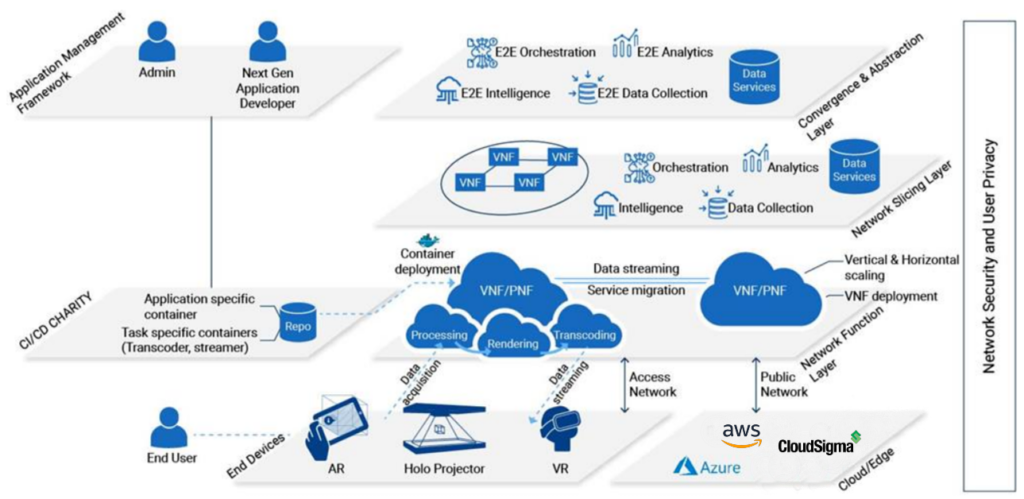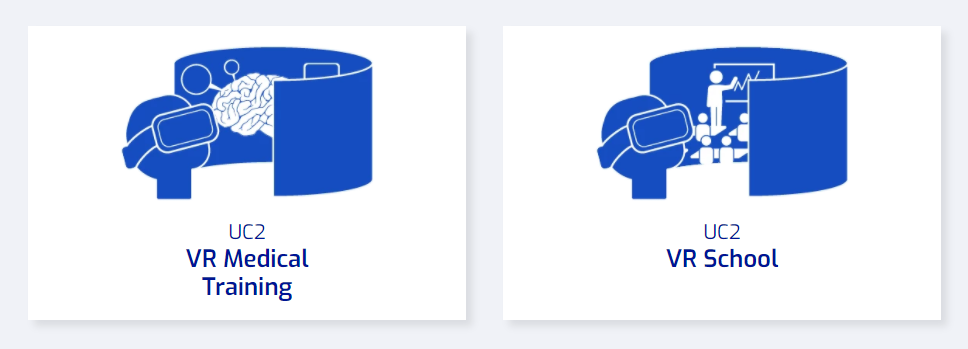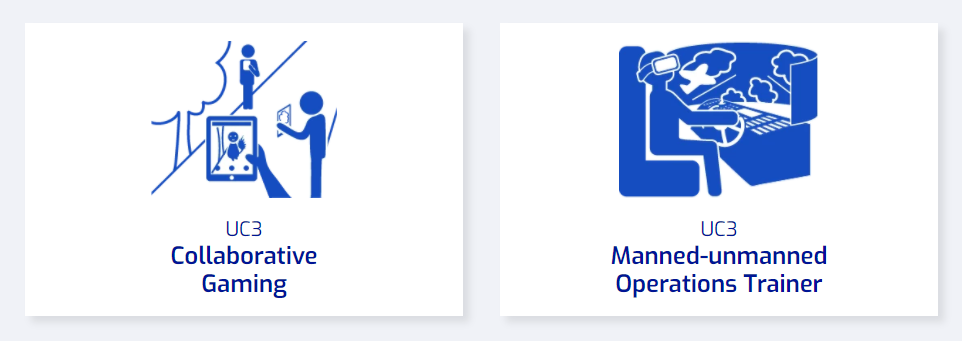The CHARITY project is an Innovation Action funded by the European Commission as part of the Horizon2020 Programme. Work started in January 2021 and will continue for 36 months. The consortium includes 15 partners from 10 countries, including 5 industry partners, 2 academic/research organization partners, and 8 SMEs. The project coordinator is Uwe Herzog from EURESCOM (European Institute for Research and Strategic Studies in Telecommunications) in Germany. The scientific coordinator is Tarik Taleb from Finnish SME ICTFICAL.
The Challenge
Advanced media technologies such as augmented reality (AR), virtual reality (VR), and holography, have seen unprecedented growth in the past few years. However, the user experience is still not yet fully immersive. This is partly due to the heavy requirements for bandwidth, network reliability, and extremely low latency. Highly interactive services that use these emerging technologies are becoming increasingly popular. Furthermore, they are beginning to push the capabilities of even the most advanced systems available today. The CHARITY project attempts to address these challenges. It does so by developing an open-source framework and tools for more intelligent use of compute and network resources.
The Proposed Solution
The CHARITY project will utilize intelligent, autonomous orchestration of cloud, edge, and network resources. It will combine low and high-latency infrastructures. These infrastructures can facilitate the requirements of emerging technologies such as AR, VR, and Holography. A community-driven, open-source framework incorporating continuous integration and continuous delivery (CI/CD), life-cycle management, and orchestration will form the foundation for an ecosystem that includes Application Providers, Telcos, and Cloud Infrastructure and/or Technology Providers.
In addition, application providers and developers will receive adaptive, end-to-end lifecycle management tools and continuous integration and delivery techniques. More than that, automation at the network level will be facilitated by zero-touch network slice lifecycle management. Finally, a Virtual Network Function (VNF) repository will be developed to help applications take advantage of the compute and network continuum management environment.
The CHARITY project will investigate network enabling technologies, including Software Defined Networking (SDN), Time Sensitive Networking (TSN), and the IETF Deterministic Networking (DetNet), for generating network slices that are able to meet the desired KPIs in terms of network throughput, reliability, and latency.
The General Architecture
CHARITY’s general architecture consists of five main layers.
The bottom layer consists of end-user devices and the cloud/edge infrastructure where the services run.
The second layer consists of Network Function Layer (NFL) and CI/CD framework components offering an ecosystem to the NextGen developers for developing, testing, and integrating their microservices to a public repository. The NFL component will use the microservices images available in the repository for instantiating different Virtual Network Functions (VNF). These containers can normally be either application-specific containers or task-specific containers (transcode, stream). This layer enables the network slice “breathing” (i.e. expansion and shrinking). This is done by managing vertical/horizontal scaling and service relocation whenever receiving commands from upper layers due to a detected degradation in Quality of Experience (QoE).
The third layer is the Network Slicing Layer (NSL) aimed at providing network slice management for applications running across multiple domains. This layer employs both AI techniques and ETSI ZSM management capabilities. It also provides self-managed and self-optimized network slices able to meet the requirements of different users.
The upper layer consists of two components:
1. The Application Management Framework, providing CHARITY with operations support system (OSS) functionalities.
2. The Convergence and Abstraction Layer, providing end-to-end multi-domain network orchestration functions, allowing orchestration and management of all the network slices, ensuring their isolation and coordination.
Finally, the Network Security and User Privacy layer is a cross-layer that assesses the security and privacy of the overall CHARITY architecture, ranging from AR, VR, and Holography based applications security and privacy, to the foundations of the edge/cloud computing, SDN, NFV, and ETSI ZSM emerging concepts.
CHARITY Architecture in a Nutshell
The Cloud/Edge
As one of the core cloud infrastructure providers on the project CloudSigma will provide the underlying infrastructure to facilitate smart and autonomous orchestration, cognitive resource management, and efficient service placement. CHARITY relies on multi-domain (administrative and technological) cloud and edge resources for offering cost-efficient services and covering wider geographic areas and users. CloudSigma provides a production cloud environment in Zurich, Switzerland, connected to a growing network of cloud locations worldwide. The CloudSigma offering is a custom-built platform designed for stability, speed of deployment, and computing performance.
The CHARITY framework presents an opportunity to further enhance our core services to support increasingly complex workloads and growing data volumes. As a cloud infrastructure provider, CloudSigma will work to meet the compute, storage, and networking demands of interactive services running AR, VR, and Holography applications on demand. Above all, our main goal will be to deliver optimized cloud resources in line with the resource management strategy developed over the course of the project. Furthermore, CloudSigma supports any platform that encourages the coherent deployment of distributed applications over heterogeneous infrastructures from multiple providers.
Use Cases
Three Use Cases have been chosen to demonstrate and validate the edge/cloud computing innovations being developed by the CHARITY project. More specifically, they are as follows: UC1 – Real-time Holographic applications, UC2 – Immersive virtual training, and UC3 – Mixed Reality interactive application. Each UC brings different scenarios with its own end-user requirements. In addition, here you can find more information regarding the use cases.
Use Case 1 – Real-time Holographic Applications
Use Case 2 – Immersive Virtual Training
Use Case 3 – Mixed Reality Interactive Application
Project coordinator: Uwe Herzog, Eurescom GmbH
Project website: https://charity-project.eu
Project twitter channel: @charityproj
Acknowledgment
 |
The CHARITY project receives funding from the European Commission under the Horizon 2020 programme – grant agreement no. 101016509. The European Commission has no responsibility for the contents of this press release. |
- A Cloud for Holography and Cross Reality (CHARITY) - June 18, 2021
- CloudSigma is now a verified Terraform provider - April 30, 2021
- Better performance at lower prices – our U.S. cloud locations - November 21, 2018
- CloudSigma and Apptus Platform partner to offer IT consultancy to APAC clients - October 15, 2018
- Increased pricing for Microsoft licensing - July 16, 2018








